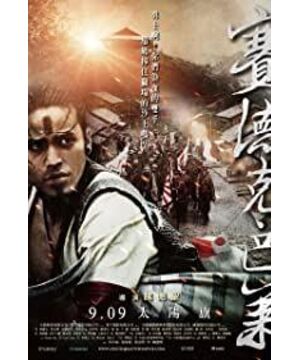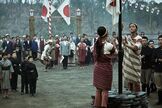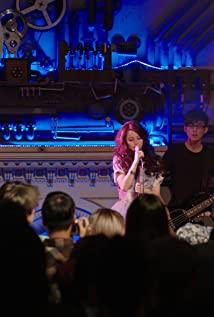Before the Seediqs stormed into the Fog Society, Mona Rudao gave a speech in which he told the young people who didn't have tattoos on their faces, it's time for you to get your prey (to the point). Therefore, the Seediq people rushed into the Wushe and started killing, in addition to the long-term resentment against the Japanese, there are also factors to complete their "adult ceremony", regardless of whether women and children are really the same in their eyes, it is to make them glorious Prey prepared for "real people" with "blood on their hands". I think when I said to a Sediq Bale: You are so cruel, you killed a lot of people. He probably thought I was praising him, and would puff out his chest proudly. People have their own beliefs, and it's really impossible to communicate.
The film has two very distinct themes. The first is to live to the death. Interestingly, this view was repeatedly presented to the Japanese by the Seediqs. In "Ye Yin Wen Shu", it is stated that "Bushi Taoist, death is also called". In the traditional Japanese concept of Bushido, death should be used to take care of the current life, and the principle of defending life with death, that is, loyalty and bravery, etc., let oneself survive Live a "worthwhile life" (囧 how do I think of Paul Korchagin...). As for the Seediq people, when Mona Rudao was thinking under the waterfall, he said, "The Japanese are denser than the leaves of the forest! There are more stones than the muddy stream!" , he already understood that at this time he saw the ghost of his father (let me rant about Hamlet...), and they sang a song together, mainly expressing this meaning:
This is my incomparably beautiful way of life, the principle of my life, which I will defend to the death. What was not sung: Otherwise, wouldn't life be better than death? It's probably hard to sympathize with this idea when we're all over the place with adages like "It's better to die than live". But the Japanese who are proud of Bushido are indeed slapped in the face. The repeated appearance of dark cherry blossom images in the film is a symbol of this point. In the eyes of the Seediq people, cherry blossoms and peach blossoms are all flowers and trees and there is no difference, but the Japanese use this as a symbol of their spirit, which is barbaric. The land of people bloomed brilliantly (whether it was because of this that someone accused the director of confusing perspective).
When I first saw Mona Ludao convincing the leader of the tower road, there was such a paragraph:
the tower road: exchange life for the totem mark. . . . So what can I get in exchange for these years of life?
Mona: Proud!
Many people will repeat this sentence, feeling very powerful. At first, I couldn't figure out the logical relationship. In our mainstream values, it is the biggest truth that concerns people's lives. Mona Rudo, what do you mean by pride? And Ta Dao was persuaded like this? Could it be that the director is fooling me? Now I think, it's an acronym, and the so-called "proud" means "proud life." Ta Dao asked: What can be exchanged for these young lives? Mona: To trade a proud life for a life (a life without meaning in his view). The so-called life to death solves an old question: what is the meaning of living? That is: live by what you believe in (whether it's Bushido or headhunting or showing off your wealth) until you die.
The second theme is the debate between civilization and barbarism. According to our traditional view of historical evolution, the spiral rises, although there are occasional dark ages, but the latter are always more advanced than the former. The entry point of this film is that civilization may make the body more comfortable, but it makes the soul weak. When the civilized Japanese fled and shivered, weren't the barbaric Seediqs charging bravely and hanging themselves. The bald general at the end of the film laments that their Bushido has been lost, which is exactly what they meant. The director was accused of confounding the perspective of colonial aggression. I think it was probably because the director had too much ambition and wanted to express something more profound.
Anyone who has tried to write a novel has this feeling that when you especially want to express an idea, the novel is finished, but it starts with nonsense, or starts with some meaningless detail. The work goes further. I thought that the shortcomings of this film are also here. These two themes are very clear and prominent, and the expression is very powerful. When I watched the film for the first time, I was deeply moved, but I didn't go back and watch it again and again. The urge to explore the details .
Finally, many scenes in this film are full of contagion, such as singing with the ghost of the father, such as dancing alone against the sun on the top of the mountain, such as the headhunter of the young Mona Ludo: entering the water, beheading, jumping, the sense of power in the brown-black body , more beautiful than a wild leopard, then I thought: This is a man. The title of "Real People" is vividly said in the first three minutes. The Renaissance praised the beauty and nobility of people, and they probably felt the same way when they looked at ancient Greek sculptures. At times like this, I can't help but put aside the immoral idea of beheading, just for a little while.
View more about Sai de ke · ba lai: Tai yang qi reviews











